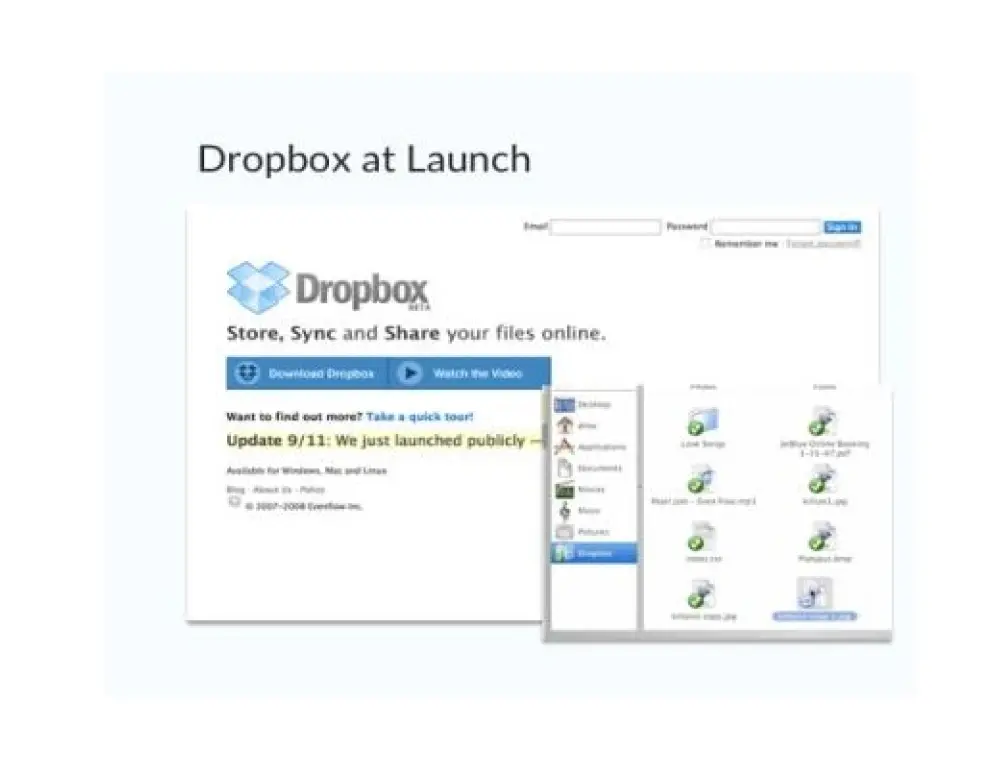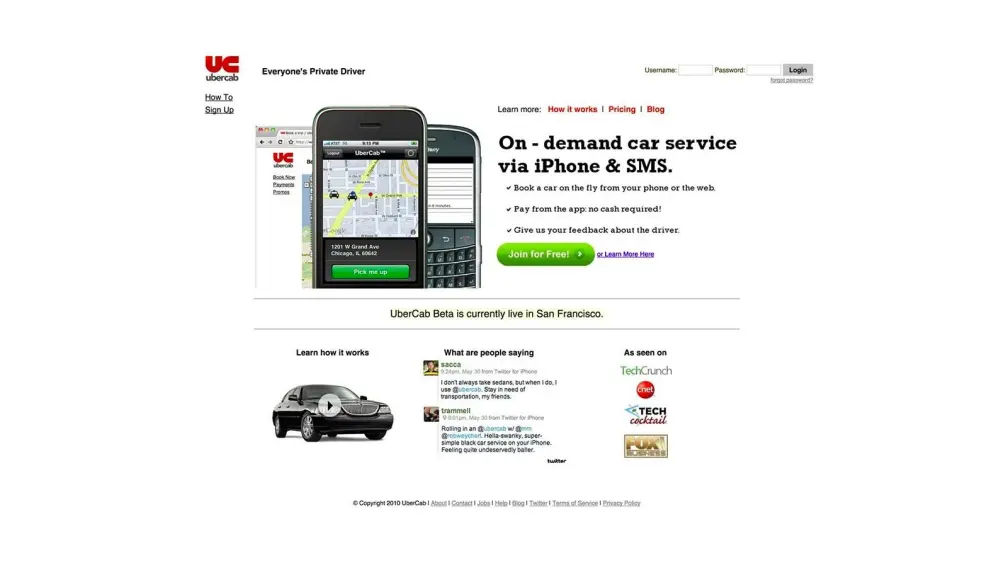KPIs to Measure Your MVP's Success

Are you a bit of a dreamer, forever envisioning innovative ideas and concepts that have the potential to revolutionize the market?
If yes, you might find yourself frequently in the shoes of a creator, bringing your ideas to life through the creation of a Minimum Viable Product (MVP).
But do you know whether your dreamy invention is having the impact you desired or making the splash you envisioned? This can only be truly known by judiciously measuring your MVP's success.
The evaluation of MVP KPIs isn't just about celebrating when you hit the mark; it's about understanding the minute aspects, identifying shortcomings, and realizing the potential for improvement. It's about ensuring that your product isn't just surviving, but thriving.
And how do you effectively measure this success?
Key performance indicators (KPIs), are a tried-and-true method that serves as your compass, guiding your MVP to the destination of market triumph.
Defining Success for Your MVP
Before you can use MVP KPIs effectively, you need to establish a clear understanding of what success looks like for your MVP. This means defining success criteria specific to your MVP.
These criteria shouldn't be arbitrary or superficial, like "a lot of users liked it." Instead, they should be concrete, measurable targets that align with your business objectives.
Think about the core objectives of your MVP.
Are you trying to validate a market need?
Are you testing user interaction with a particular feature?
Or are you experimenting with a new pricing model?
The answers to these questions should guide your definition of success.
For example, if you're a SaaS company launching an MVP to test a new feature, your success criteria could be related to user engagement with that feature. On the other hand, an eCommerce business might define success for its MVP as achieving a certain conversion rate.
Aligning MVP Success Criteria with Business Objectives
An essential aspect of defining MVP success criteria is ensuring they align with your broader business objectives. It's not enough for your MVP to be successful in isolation—it needs to contribute to the overall success of your organization.
Did you know that properly scalable startups grow 20 times faster than startups that expand early? This statistic highlights the importance of setting the right metrics to measure your MVP's success and aligning them with your overall business goals.
If your business goal is to increase the overall number of users, your MVP's success metrics should reflect that. You could set a target for the number of new sign-ups, or the percentage increase in user base following the MVP's launch.
Similarly, if your business objective is to grow your revenue, you might focus on MVP KPIs like average revenue per user or conversion rates.
This alignment ensures that your MVP isn't just an isolated experiment—it's a strategic initiative that drives your business forward.
Choosing the Right MVP KPIs
Selecting the appropriate KPIs to measure the success of your MVP depends on the specific goals of your MVP.
To give you a more practical understanding of how to set your MVP success criteria, let's take a look at some examples across different types of MVPs. This tabulated illustration aims to serve as your MVP guide, assisting you in your journey to realizing your MVP goals:
| Type of MVP | Potential Success Metrics |
|---|---|
| Landing Page MVP | This MVP type aims to gauge interest in a product or service. Success metrics for such an MVP could include the amount of website traffic, number of user sign-ups or subscriptions, bounce rate, and average session duration. |
| Explainer Video MVP | For an MVP that relies on a video to present a product or service, relevant success metrics might include the number of video views, average watch time, click-through rate (CTR) to the product site, and the number of user subscriptions or inquiries. |
| Concierge MVP | This type of MVP involves manually fulfilling service processes that will be automated in the final product. Success can be measured by the Customer Satisfaction Score (CSAT), Net Promoter Score (NPS), retention rate, and conversion rate. |
| Wizard of Oz MVP | In this MVP, customers believe they are interacting with a fully functional product, but behind the scenes, the operations are performed manually. Key success metrics would include the conversion rate, retention rate, user feedback, and Customer Acquisition Cost (CAC). |
| Piecemeal MVP | This typically involves using existing tools and services to deliver a product or service. Success can be gauged by the Customer Satisfaction Score (CSAT), user feedback, retention rate, and rate of revenue growth. |
These are potential success metrics based on the nature of the MVP and should be customized according to your specific business model, target audience, and MVP goals. Your journey towards successful MVP measurement can be a complex one, and it's where minimum viable product services like F22 Labs can come in handy.
Remember, in the world of MVPs, measurement is not a one-size-fits-all approach. What are the KPIs that matter most to your MVP?
MVP Success Metrics in Real Life: Case Studies
The purpose of an MVP is to learn and improve. Don't be afraid to redefine your MVP goals or pivot your strategy based on your findings. As long as you're moving closer to a product that satisfies your customers and supports your business objectives, you're on the right track.
Let’s look at how some companies have utilized MVP KPIs and MVP success criteria in practice.
Dropbox
Dropbox's MVP was a simple video demonstrating the product's functionality before it was fully built. The goal was to gauge market interest and gather user feedback. The MVP success criteria were the number of sign-up requests received and the quality of feedback.
When the video resulted in sign-ups increasing from 5,000 to 75,000 overnight, Dropbox knew they were onto something. The surge in interest, validated through their selected MVP KPIs, led them to develop the product we know today.

Groupon
Groupon started as 'The Point,' a platform to rally people around causes. However, they pivoted to become a discount coupon site, starting with a simple MVP – a WordPress blog.
The MVP success criteria were the number of users taking up the coupons, and the data showed that the MVP was a hit. This led to the development of the full-fledged Groupon platform.
Uber
The MVP of Uber was nothing more than a simple app called "UberCab," initially available only in San Francisco. The primary MVP success metrics were the number of rides booked and user feedback.
The app's goal was simple: book a luxury car ride with the push of a button. By focusing on this core service, Uber was able to gauge market acceptance and user satisfaction. Once these MVP KPIs showed positive results, Uber expanded its services, eventually transforming into the ride-sharing behemoth we know today.

Airbnb
Airbnb started as a solution to a personal problem of its founders - they couldn't afford their rent. So they set up a simple website offering their living room space with three air mattresses for rent, thus creating an MVP for what would become Airbnb.

The success of this MVP was measured by the number of bookings and the feedback received from both hosts and guests.
Their MVP goals were achieved when they saw a steady stream of bookings and positive user feedback. This gave them the validation they needed to expand the service into the global platform it is today.
These success stories underscore the critical role of identifying and monitoring the right MVP KPIs. They also demonstrate how MVP goals can be met by staying focused on user needs and continuously learning from MVP success metrics.
Whether you're an entrepreneur embarking on your startup journey or a business leader looking to innovate, these examples offer invaluable lessons.
Key Performance Indicators (KPIs) for MVP Success
In the world of startups and innovation, the Minimum Viable Product (MVP) concept has become ubiquitous. The ultimate MVP goal is to validate assumptions, learn more about the target audience, and reduce the risks associated with product failure.
This is an approach that F22 Labs, a seasoned player in the startup ecosystem, regularly employs and recommends.
However, understanding whether your MVP is successful necessitates a close examination of the right KPIs. In our extensive MVP guide, understand crucial MVP KPIs and delve into how they help measure MVP success.
User Engagement Metrics
User engagement metrics offer a quantitative understanding of how users interact with your MVP. These metrics reflect the MVP's appeal and value to users, indicating whether the MVP meets their needs and expectations.
Active Users:
A key MVP KPI, active users represent the individuals consistently engaging with your MVP. Suppose you're a SaaS startup. In that case, you might classify active users as those logging into your software platform at least once a week.
An increase in active users over time suggests that your MVP is resonating well with your audience.
User Retention Rate:
User retention is another critical KPI for MVP success. It measures the percentage of users who return to your product after their initial use.
If out of 100 new users in the first month, 60 come back in the second month, your retention rate is 60%. A high retention rate signals that your product is compelling enough to entice users back.
Time Spent:
Time spent gauges the duration users spend on your platform. The more time users spend, the more engaged they likely are with your MVP.
For instance, if users are spending more time on your e-learning platform than industry standards, it means they find your content useful and engaging.
Conversion Rates:
Conversion rates reflect the percentage of users who complete a desired action, such as purchasing a product, signing up for a newsletter, or registering for a service.
For a SaaS startup, a conversion might be a free trial user upgrading to a paid plan.
User Feedback and Satisfaction
When it comes to gauging the success of minimum viable product services, never underestimate the power of direct user feedback.
Net Promoter Score (NPS):
A customer loyalty metric, NPS categorizes users into promoters, passives, and detractors based on their likelihood to recommend your product.
If your SaaS platform's NPS is +50, it's generally considered excellent and suggests you have more promoters than detractors.
Customer Satisfaction Score (CSAT):
CSAT is a simple yet effective metric gauging user satisfaction with your product or a particular feature or interaction. Users typically rate their satisfaction on a scale of 1-5 or 1-10. The higher the score, the higher the satisfaction.
User Surveys and Feedback:
User surveys capture nuanced insights into user preferences, problems, and desires. Regular feedback solicitation helps you understand your product's strengths and weaknesses from the user's perspective.
Product Performance Metric
Product performance metrics provide insights into the technical robustness and reliability of your MVP.
Load Time and Performance:
The faster your MVP loads, the better the user experience. According to a report by Google, 53% of mobile site visits are abandoned if pages take longer than three seconds to load. That's why monitoring your MVP's load times across different devices and platforms is essential.
Error Rates and Bug Fixes:
The number of bugs or errors in your MVP can significantly impact the user experience. Monitoring error rates and tracking the speed of bug fixes helps ensure seamless product functionality.
For a SaaS business, keeping bug resolution time below a certain threshold (say, 48 hours) could be a crucial KPI.
System Uptime and Availability:
This KPI measures how often your MVP is operational and available for users. In the case of a SaaS MVP development company, striving for near 100% uptime is a common goal, ensuring users can access your service whenever they need it.
Business Metrics
The financial viability of your MVP and its potential to drive revenue growth is another key aspect of MVP success criteria.
Revenue and Return on Investment (ROI):
How much revenue does your MVP generate, and what's the ROI? These metrics assess whether your MVP is financially successful. High ROI means your MVP generates more revenue than the costs incurred to develop and market it, indicating a profitable product.
Customer Acquisition Cost (CAC):
CAC calculates the total cost of acquiring a new customer, from marketing and sales expenses to any other costs associated with attracting users to your MVP. It's crucial to keep CAC lower than the Lifetime Value of a Customer (LTV) for your MVP to be profitable.
Lifetime Value of a Customer (LTV):
LTV estimates the total revenue you can expect from a single customer throughout their relationship with your business. If LTV is significantly higher than CAC, it means that your business model is sustainable and profitable.
Market Metrics
Market metrics gauge the success of your MVP within the broader market context, offering insights into your MVP's competitive standing and growth potential.
Market Penetration:
This KPI measures the proportion of your potential market using your MVP. If you’re a SaaS startup targeting SMEs, your market penetration could be the percentage of SMEs using your platform in a specific geographical area.
Competitor Analysis:
Understanding your competitors' offerings and performance helps position your MVP within the market landscape. It helps you identify unique selling points and areas for improvement.
User Growth Rate:
A growing user base is often a positive sign of MVP success. User growth rate measures the speed at which new users are acquiring your MVP over a specific period.
The key to successfully navigating your MVP journey lies in identifying the right KPIs, setting realistic goals, and monitoring these metrics regularly. Your MVP KPIs will be instrumental in guiding your MVP's evolution, shaping your business strategy, and ultimately driving your startup toward success.
The MVP Services and Tools You Need
There are various tools and minimum viable product services that can help you track your MVP KPIs and help measure success. These tools can give you insights into user behavior, engagement, and feedback.
Here are a few you might find useful:
Google Analytics: Google's comprehensive analytics platform allows you to track a wide range of metrics like user demographics, behavior, and conversion rates.
Hotjar: Hotjar offers heatmaps, session recordings, and user feedback tools, which can be especially useful for feature MVPs.
Mixpanel: Mixpanel focuses on user interaction with your product, helping you understand which features are popular and why.
Uservoice: Uservoice is a platform that allows you to gather and analyze user feedback, which can be invaluable for refining your MVP.
Final Thoughts
The key to successfully navigating your MVP journey lies in identifying the right KPIs, setting realistic goals, and monitoring these metrics regularly. Your MVP KPIs will be instrumental in guiding your MVP's evolution, shaping your business strategy, and ultimately driving your startup's outward success.
If you are interested in building an MVP that resonates with your target audience and meets your business goals, consider F22 Labs MVP development services. We understand the intricacies of building and measuring an MVP's success. If you're feeling overwhelmed or just want an expert opinion, don't hesitate to reach out to us. We're just a phone call away. Schedule a free 1-hour consultation with our experts today, and let us steer you toward your unique path to success.
With the right set of MVP KPIs, the sky's the limit.
As Thomas Edison once said, "The value of an idea lies in the use of it."
So, are you ready to transform your MVP from a promising concept into a roaring success?
